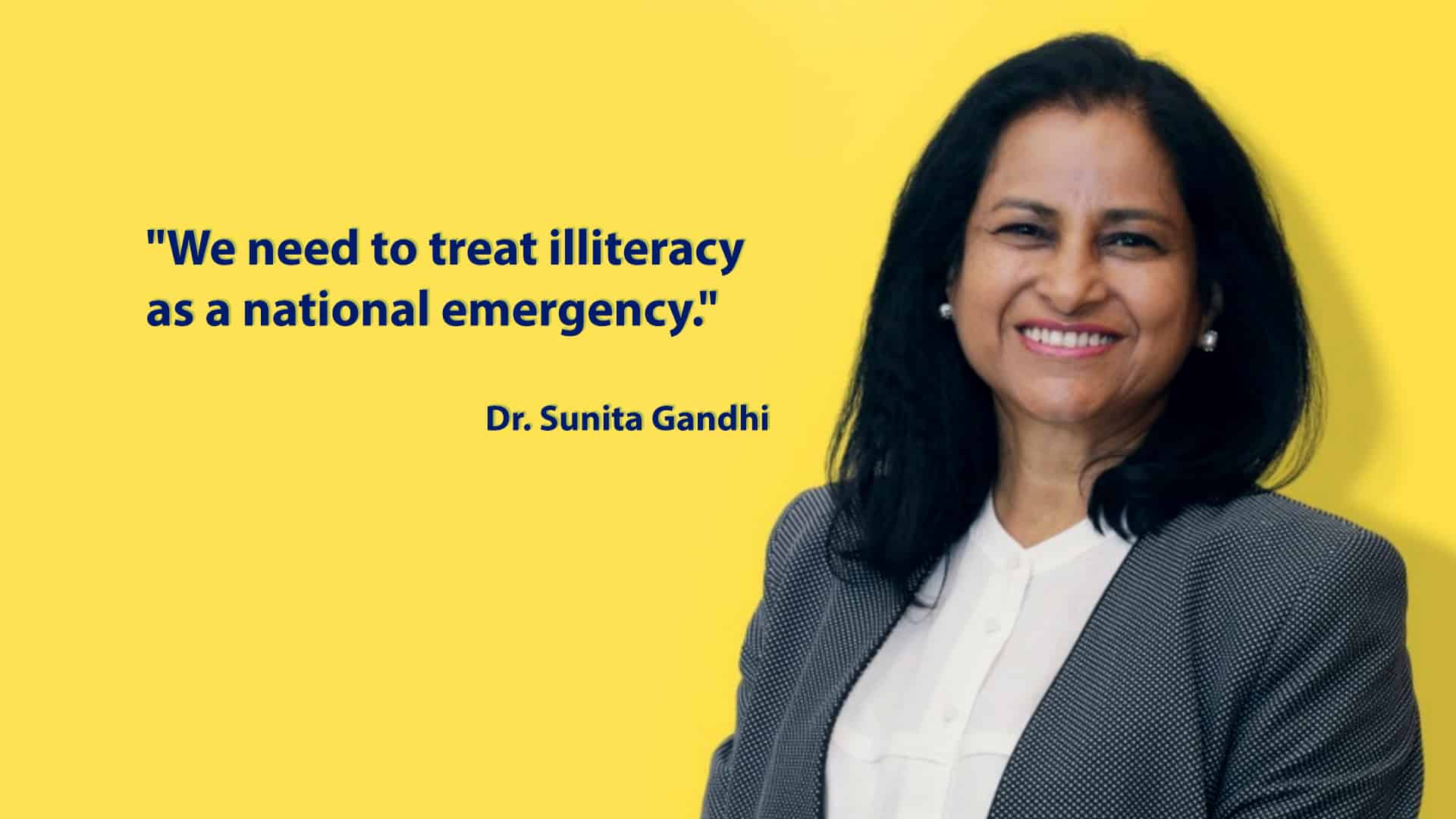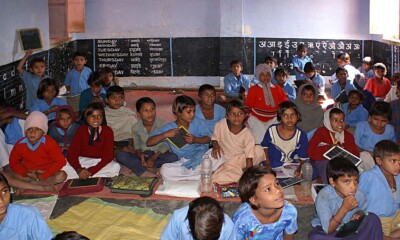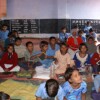Education
This former World Bank exec is pioneering a silent-revolution in India’s education system
“The pandemic has reversed several years of gains made in education and that’s why we must treat illiteracy as a national emergency. It requires similar determination that we showed in tackling covid,” says Dr Sunita Gandhi, a former World Bank economist, who has devoted her life to combat illiteracy in India.
During her stint at the World Bank, Dr Gandhi felt the need to create a platform to help the poor and marginalised sections in India. In 1992, she founded DEVI (Dignity Education Vision International) Sansthan, a non-profit that promotes the cause of education and helps underprivileged people become literate in a short period. In 1999, she quit her high paying job to return home and embarked on a mission to educate India. Dr Gandhi has won acclaim for pioneering-Global Dreams Literacy program, a unique initiative that helps illiterate people become literate in a month. Devi Sansthan has employed this methodology to reach around 500,000 students in 13 Indian languages across India. She is also the founder of two edtech platforms- Global Classroom Private Limited (GCPL) and Global Training and Education Institute (GETI) that provide curriculums and assessments to schools and train in-service and pre-service teachers
In an interview with The Plunge daily, Dr Sunita Gandhi underscored the urgency to address the learning gap caused by covid and also highlighted the key challenges in India’s education system and corresponding measures to tackle them.
1) Education in rural India is plagued by a myriad of problems. Right from infrastructural gaps to financial problems to gender disparity, students in our towns and especially villages do not get proper education. How should we address these challenges and how technology can be an enabler in this change?
A: Roughly half of our children are in the rural areas and they have every right to get excellent education. So, the first thing that needs to be done is that we must shape up our schools. I don’t think India is a developing country from that point of view, because we have the money to support renovation of our schools. I can share with you the incredible story of IAS officer Aditya Ranjan, who got his first posting as District Development officer at West Singhbhum district of Jharkhand. Mr Ranjan was aghast at the state of education in the tribal areas of his district. So, he collaborated with a few NGOs and fixed up the pre primary schools just by crowd participation. So, people are willing to pitch in and there is no reason not to do it except for lethargy or lack of will on our part.
As far as technology is concerned, it again requires a proactive approach. We know that all villages will eventually be connected with the internet; why not now? So, we need to push for things and make it important. For a majority of governments, education never really featured high in their manifestos. We need to change that. When education is made important, a billion things happen. We’ve seen it in countries like Singapore, we have seen it in South Korea. They made education their top priority and the result is for all of us to see. They are top in PISA, which is the international examination of comparison with OECD countries.
2) It’s been more than 70 years since we gained independence. Successive governments have failed in providing quality education to a vast majority of children in our country as it’s still available to the privileged few. We also see private schools and institutions charging exorbitant fees, whereas quality government-run schools have limited seats. So how can we address this issue in the long run?
Firstly, when we look at the performance of budget private schools in rural areas, they are not doing much better than the government schools, but only marginally so. So it is actually the whole issue of governance, which we need to worry about, especially when it comes to the government sector. Lack of accountability and transparency have been the two most important problems in our education system. They have held back the kind of education our children can get, and should get. At many government run schools, teachers are not showing up for work, or they arrive late and leave early. There are teachers who do not teach at all despite being present in the school or spend time doing paperwork for other purposes. So these are accountability issues. Then, there are transparency issues. We don’t have any data readily available that tells us about the performance of the kid. The government has now clear cut standards of outcomes that the children have to accomplish, but who is ensuring that these are being accomplished. So, we need to circumvent those issues. Also, if you look at the salaries of the teachers that talk most. They’re getting paid more than an IAS officer. Let’s not forget the holidays they get or the number of classes they take. But what we’re seeing is that pay has not had an impact on improving results. So, the wages are settled on the basis of political economy, not on the basis of deserving or not deserving. On the other hand, teachers at private schools are doing a better job at a much lesser salary. So, these are macro level issues where the government will have to take the call but we must tighten the bolt in terms of accountability.
3) The government recently launched the Nipun Bharat mission to ensure every Class 3 child read with meaning and perform basic math problems by 2026-27. It’s a very ambitious target as we know many school going children struggle to read even after spending years in school. How do you see the government accomplishing this goal?
Nipun Bharat is a very good statement of purpose. It is also desirable in terms of how the teaching should be conducted in the classes like hands-on activities and real life experiences. The biggest priority is being given to the universal foundation, literacy and numeracy. The education ministry has asked states to make an implementation plan and to set their targets and meet them. For the first time, literacy has been brought up on the agenda as top priority. They’ve defined the goals very clearly as to what is expected for the foundational literacy and numeracy of all children. And I think this should yield a lot of results, especially making the states accountable, that they go and do this, and in turn, they will make the schools accountable. Another key question is of the modalities they will follow to make this mission successful. If a particular state tries out a methodology that works for them, they can share their experiences to help other states.
Also Read: How logistics-tech startup Vahak is reducing entry barriers for small players in transport industry
4) Skill gap is another major issue. what is being taught in schools and colleges are not in sync with what is being actually demanded by the industry. So, the skill gap is also massive. what, according to you, could be done to address this skill gap.
We are, unfortunately, quite proud of our education system and that deters us from being very circumspect about it. Because we are clouded by this idea that we have a great education system. And we think that because so many children make it to IITs and IIMs and because they are getting good jobs abroad, we tend to be very self satisfied. And I think this is a recipe for disaster. Because the reality is the majority of the children are not getting a good education. And you can say that, in many cases, children are doing better because of the family factor, rather than the schooling factor.
I sincerely believe that our schooling system needs huge rejuvenation, it needs complete turnover. The objective of education has become clearer with SarthaQ goals and Nipun Bharat goals. But how do you get the teacher who’s not performing so that the outcomes are met. We also need to look at the content because a good part of it is quite archaic. These topics are knowledge-based, something you can easily find on the internet. So the methodology and the content, both have to be revised.
I’d suggest disruptive changes in terms of the curriculum, and in terms of how it is implemented. We have prepared a reverse teaching method, totally different to the rote learning method. And it’s called the Global dream literacy toolkit methodology. A majority of the learning under this methodology happens by the children interacting with hands on materials, or through their cognitive powers learning new things. In the reverse methodology, instead of teaching one letter a day, we are able to teach 10 letters on one day rather than one letter on and on in a week. So you can see it scales up really fast, it uses the mind that is the logic and logical cognitive connections in the mind.
5) There is a lack of inclusion in contemporary school settings . There was a UN report released last year, which said almost 3/4th of children with disabilities in India do not attend any educational institute. This is a big issue. How can we make our schools more inclusive?
I know a child in Karani village who couldn’t walk at all. She has to be carried everywhere. Similarly, there are other disabilities that make it impossible for them to go to school. So in this case, the school should go to them. Then, there are kids with disabilities who can go to schools but schools lack basic facilities in terms of the physical infrastructure or in terms of the teachers who can look after their needs. Another issue is related to taboos where teachers can play a big role in creating a warm caring environment , and make them feel comfortable and capable.
Also Read: How Toprankers emerged as a popular test-prep platform for alternative careers
6) Many parents do not consider online education as a healthy alternative to offline mode of learning. A recent survey conducted by a consulting firm in association with ISB suggested that around 93% of parents strongly believe that traditional methods of learning are best suited for their children. The survey also found that the majority of parents are worried about the physical and mental well-being of their children due to their over engagement with gadgets. Your thoughts on the issue.
Technology should be used sparingly. It definitely serves a purpose, for example, assessments are best done through technology. Because the purpose of assessment is not judgment of a child’s capacity, but understanding where the learning has taken place and where the learning needs to be corrected. Quick and real time assessments are possible through technology, which is not possible through the old written way of testing and correcting. I also believe that the videos are not the best way to go forward when a real life teacher can be there in the class explaining concepts. But sometimes you need the video and use the technology to educate students. For example, you can best explain phenomenon like photosynthesis or a flower unfolding through a video. So, technology is an important component of learning but not the only one and there is no substitute to a real physical classroom setting.
Also Read: This edtech platform is helping college students make right career choices
7) A key clause in the NEP says that the medium of instruction till class 5 will be in mother tongue or local language. There is an argument that it could put children in govt schools at a disadvantage as private schools may continue to teach in English. What do you think?
A child can learn multiple languages simultaneously. This has been shown across the world. In the Nordic countries, children are typically learning three to five languages in early years. The idea that children learn best in their own language cannot be denied but not learning English can put them at a disadvantage. So, I would say, it will place the private school children in a better stead. I would suggest there should be an environment of teaching multiple languages in a classroom to a minimum, possibly three. So a combination of three languages would be fantastic, if not, at least, the mother tongue and English should be taught.
8) The advent of pandemic has been a watershed moment for educators across the globe, children have suffered a massive amount of learning loss and this crisis has not ended. So what should be the way forward?
According to the SDG 2020 report by the United Nations, several years of gains made in education have been lost due to the pandemic. And if we are talking about India, data says 75% of the children of age 10-11 couldn’t read or write at the grade three level. Now, just imagine the loss of learning in the last one and half years. The entire country has to really put up its act together. We have to treat literacy as a national emergency. We cannot just rely upon the old mechanisms. We need to make combined efforts to tackle this crisis as we did to control the pandemic. We need to work on a mission mode involving every segment of society and employing innovative methods of teaching and learning like the one we are proposing through global dream initiative.














